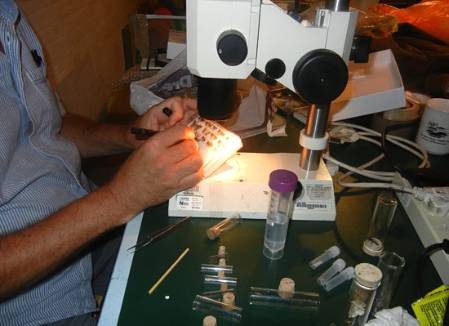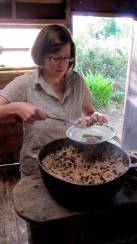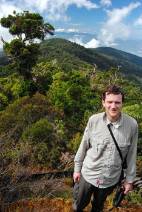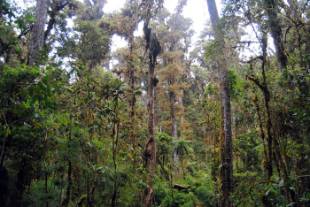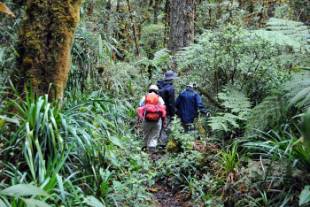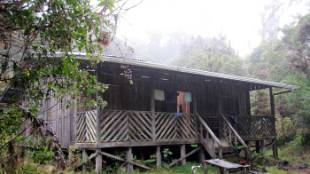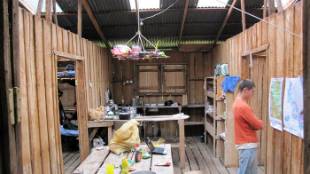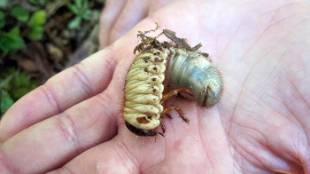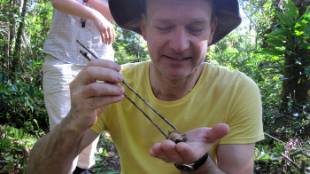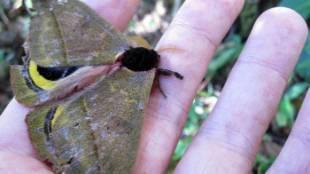At the field station on St. Mary’s I find Martin Honey, an entomologist who works on lepidoptera. He shows me his moth trap, which is a circular vessel filled with empty egg cartons with a glass lid and a large light bulb in the middle (in other words, it looks a bit like a big rice cooker with a light bulb sticking out of the top!).
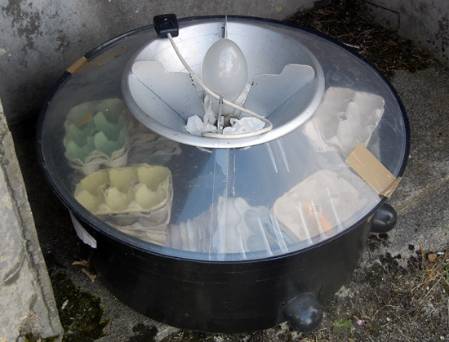 Martin's moth trap in a shady area at the field station. Awaiting winged nighttime visitors.
Martin's moth trap in a shady area at the field station. Awaiting winged nighttime visitors.
Martin tells me that when he switches on the bulb - which is mainly ultraviolet light - at night, the moths are attracted and once inside, they can rest on the egg cartons until he collects them in the morning. Martin keeps the trap in shady places so that the moths don’t get too hot in the sunlight. He shows me a few specimens that are inside and says he has just freed quite a lot so if I come back tomorrow he will keep some for me to draw.
Martin shows me a specimen that he has put to sleep with a special liquid. The moth’s wings are closed, and I ask how the wings are kept open as we see in the museum collections. This proves to be a good question...
In the field work room we find Martin's microscope and a few dozen moth specimens. He tells me that the wings are set by hand, and proceeds to show me how this is done. He carefully takes a moth specimen with forceps and places it under the microscope alongside some pins, which are so small they are almost invisible!
Moth specimens and pins at the microscope, ready for setting.
Martin looks down the microscope, controls the instrumental pins with forceps and begins to slowly open the wings… he arranges the legs at 45 degrees and makes sure the antennae are forward, then slowing impresses the pins into the foam to hold the posture that he has now created for the moth specimen. He makes it look effortless and I am inspired, it is really quite an artful practice.
Martin tells me he learned to set moth wings by hand at the Museum, and I am intrigued to hear more:
GA: Are all entomologists at the NHM expected to do this in their job description?
MH: Some people just cannot do this, it requires too much dexterity.
GA: So some scientists can do it, but are people employed just to do the setting, and in the past, has the NHM employed setting staff?
MH: Yes - there used to be a special room called the setting room in the NHM, and specially trained people just did that work. Now there are specialist setters in Prague, they are not scientists but mostly amateur entomologists. I may send the larger specimens there depending on their number and I might do some setting work when I retire, and challenge the Prague group!
 Martin gives me four live moth specimens found on St.Mary's. I will draw them and let them go afterwards.
Martin gives me four live moth specimens found on St.Mary's. I will draw them and let them go afterwards.
Posted on behalf of Gemma Anderson, an artist and PhD researcher who accompanied Musuem scientists on a field work trip to the Isles of Scilly between 17 and 23 August 2013.



